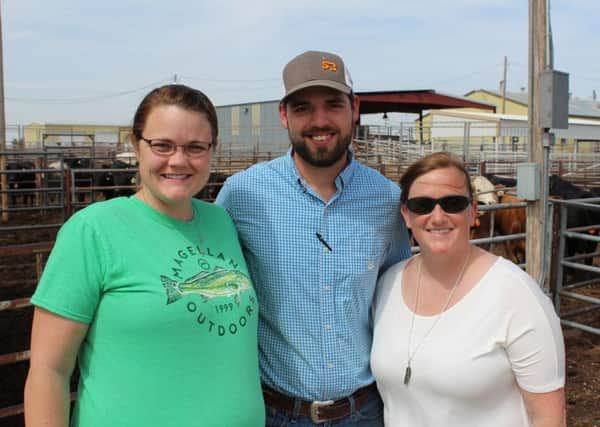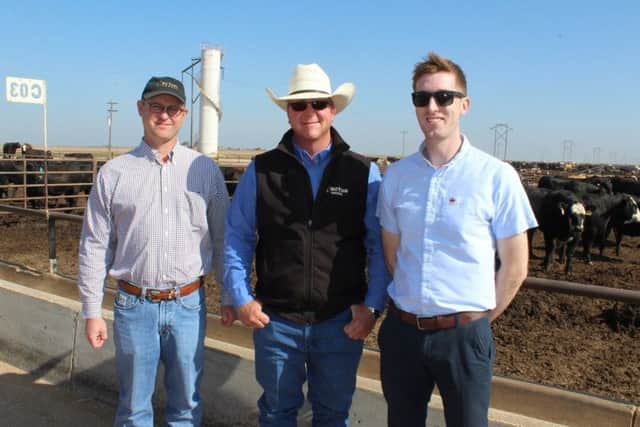US wants Europe to follow its lead


Both classes of product are widely used to help finish cattle across the United States.
“All the research clearly shows that there are no additional hormonal residues in beef from cattle treated with hormonal growth regulators when compared with animals that do not receive these treatments,” said Dr Ben Holland, who heads-up the research division of Cactus Feeders.
Advertisement
Advertisement
Currently finishing 1.2m cattle per year, the company is operating from 10 locations in the southern United States. Holland works at the Wrangler feed yard, near Tulia in the Texas Panhandle.


The site can accommodate 50,000 cattle at any particular time. Animals arrive there at the yearling stage, weighing around 750lbs. They are brought through to finishing live weights of between 1250 and 1500lb in 180 days.
“Europe’s stance on hormonal growth promoters does not stand up to scrutiny, particularly as the finishing of bulls is allowed in the EU,” Holland further explained.
“These growth promoters allow us to finish cattle faster from the same daily feed inputs, as will be achieved by steers and heifers that are not implanted.
“The issue of meat residues does not come into it.”
Advertisement
Advertisement
Holland also confirmed that feed grade anti-microbials are routinely specified in the rations fed to all the cattle in the Cactus Feeders system. These include monensin and tylosin.
“We use tylosin to reduce the levels of liver abscesses in finished cattle,” he said.
“The general public in the United States are becoming more aware of the threat posed by antibiotic resistance.
“However, the US cattle industry makes the point that antibiotics should be divided into two categories: those used in animal production systems and those required for as human medicines.”
Advertisement
Advertisement
Holland was speaking to a group of Irish farmers and industry representatives. They are currently travelling through Texas and New Mexico, courtesy of an Alltech-organised visit.
Dr Jenny Jennings is a member of the scientific team, working at the Texas A & M University’s Beef Cattle Research Lot on the outskirts of Amarillo.
She also confirmed the growing awareness of the challenge posed by antibiotic-related management procedures within the US livestock production sector.
“The completion of the Veterinary Feed Directive by the United States’ Department of Agriculture has done a lot to improve management practises in this regard,” she said.
Advertisement
Advertisement
“For example, tylosin can now only be administered to beef animals on the back of a veterinary prescription. This must identify the use to which the product is being put and the feed rate that must be used.
“But even with these steps having been taken there is growing pressure from consumers to have the use of tylosin banned as a feed additive within the beef industry.”
Both Holland and Jennings confirmed the intention of the US beef industry to secure new export markets for its output.
However, Jennings admitted that the lack of a comprehensive birth to slaughter animal traceability system was a major drawback in this regard.
Advertisement
Advertisement
She concluded: “We buy in feeder cattle for our commercial trial work. In most cases, I can work out which state they came from. But to go back beyond that is impossible at the present time.
“We just don’t have the records.”